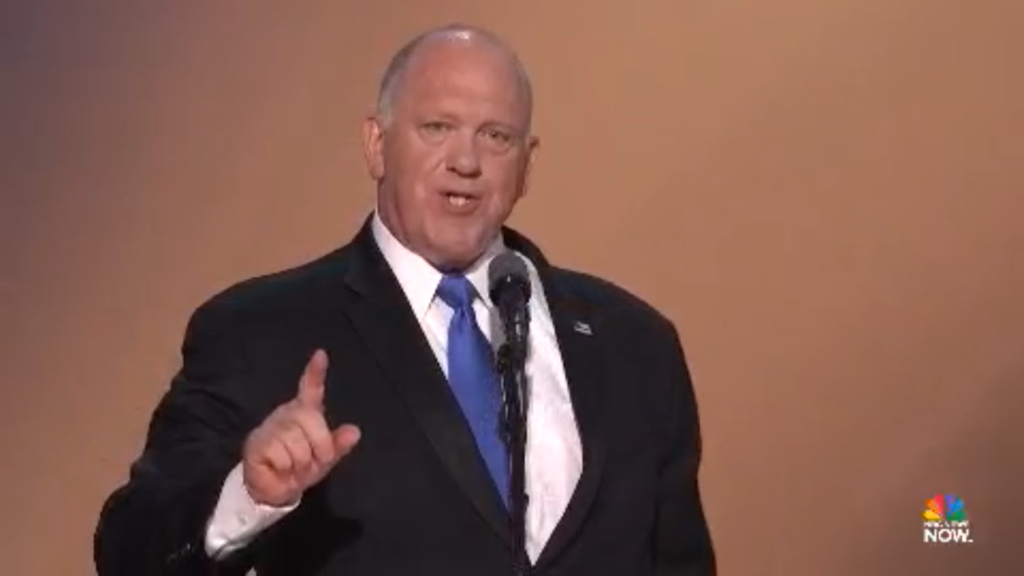
After making immigration a central issue in the presidential election, President-elect Donald Trump has tapped Tom Homan to join his administration as the incoming “border czar.” Trump shared the news on Truth Social, describing Homan as the best choice to oversee the nation’s borders, including the southern and northern borders, as well as maritime and aviation security. As immigration remains a hot topic in American politics, this appointment signals Trump’s intent to take a strong stance on border control and immigration enforcement.
Who Is Tom Homan?
Tom Homan is no stranger to border security or the Trump administration. He previously served as the acting director of U.S. Immigration and Customs Enforcement (ICE) during the first 18 months of Trump’s first term, where he was known for his hardline approach to immigration. Homan’s career, however, spans multiple administrations. Under President Obama, he was the executive associate director of ICE’s enforcement and removal operations, where he received the Presidential Rank Award in 2015.
Known for his tough stance on immigration enforcement, Homan has been both praised and criticized for his policies, especially in matters concerning immigration detention and deportation. His return to a top role suggests a renewed commitment from the Trump administration to carry out sweeping changes to immigration policies, which could include large-scale deportations and stricter border control.
What Changes Could Homan’s Appointment Bring?
With Homan as border czar, Trump’s administration plans to intensify immigration enforcement. Trump has announced his aim to conduct mass deportations, which could reportedly affect millions. As border czar, Homan’s role will be to implement these deportations, manage border security, and coordinate with various agencies to maintain control over all entry points to the U.S.
Homan’s track record includes supporting controversial policies, such as family separation at the border. During Trump’s first term, ICE’s policy of separating migrant parents from their children was highly debated. Defending the policy in 2018, Homan told PBS that keeping families together was a logistical issue, as children couldn’t accompany parents who faced criminal charges for illegal entry. This stance made Homan a focal point for both supporters and critics of Trump’s immigration policy.
Homan’s position also includes a focus on cities and states that have adopted “sanctuary policies” — jurisdictions that limit cooperation with federal immigration enforcement. Homan has frequently criticized these sanctuary areas, claiming they put politics over public safety. In a 2018 interview, he went so far as to suggest that California should lose funding for its sanctuary policies. For Homan, these policies hinder the efforts of immigration enforcement and create risks for the public by allowing undocumented migrants to evade federal authorities.
Trump Arnold Palmer at Pennsylvania Rally Sparks Controversy
The Debate Over Birthright Citizenship and Deportations
Homan has made headlines with his stance on deportations of undocumented individuals’ children born in the U.S. Though the children of undocumented migrants are U.S. citizens by birth under current law, Homan has suggested that children born in the U.S. to individuals in the country illegally could be affected by immigration enforcement. In an interview with CBS, he commented on the impact of parents who enter the U.S. illegally and then have children, creating what he referred to as a “crisis.”
This position touches on the broader debate over birthright citizenship and the rights of children born to undocumented immigrants in the U.S. Though there are no official changes in law, this stance reflects Trump’s administration’s intent to revisit certain interpretations of immigration policy, which may affect families across the nation.
The Impact of Past Policies and Future Implications
Under Homan’s leadership at ICE in Trump’s first term, the agency’s policies sparked both support and backlash. For example, while 2017 saw a dip in border apprehensions, the numbers increased significantly in 2018 and 2019, with 2019 setting a record high for apprehensions at the southwestern U.S. border.
When the COVID-19 pandemic hit in 2020, there was a temporary drop in border crossings due to global restrictions and health concerns. However, as restrictions lifted, border crossings surged to unprecedented levels in 2021-2023, only starting to ease in 2024. These statistics underline the ongoing complexities and challenges in U.S. immigration policy — challenges Homan will be tasked with addressing as border czar.
Trump’s pick of Homan has already fueled debate over immigration policy and enforcement methods. Homan’s supporters argue that he brings a necessary toughness to border security and is committed to upholding the rule of law. Critics, however, worry that his policies will lead to human rights issues, especially if the administration renews family separation policies or targets sanctuary cities.
What Lies Ahead for U.S. Immigration Policy?
With Homan as border czar, the Trump administration has set the stage for a stringent approach to immigration policy. The emphasis on mass deportations, tougher policies toward sanctuary cities, and discussions about birthright citizenship suggest that the U.S. is heading into a more restrictive era regarding immigration. As Homan takes charge, the coming months will likely bring changes that could have far-reaching impacts on migrant communities and U.S. immigration systems.
Homan’s role will not only influence those attempting to cross U.S. borders but also challenge cities and states with sanctuary policies. As the nation’s political divide on immigration deepens, Homan’s actions and policies will play a crucial role in shaping America’s approach to border security, public safety, and the legal rights of migrants.
As border czar, Homan is positioned to carry out Trump’s vision for immigration reform, which emphasizes strict border control, large-scale deportations, and reduced sanctuary protections. While the full impact of these policies remains to be seen, it’s clear that immigration will continue to be a central and contentious issue as Trump takes office once again.

2 thoughts on “Tom Homan Appointed as “Border Czar”: A New Era of Immigration Policy”